The Cost of Fixing a Blocked Toilet
Last updated 16th January, 2024
Do you have a blocked toilet? Toilet unblocker not working?
If so then this article is for you! It costs on average between £30-£60 to unblock a toilet, but this can change depending on circumstances. So if you need help with unlocking a toilet continue reading for timeframes, supply costs and labour fees.
Keep reading for more information!
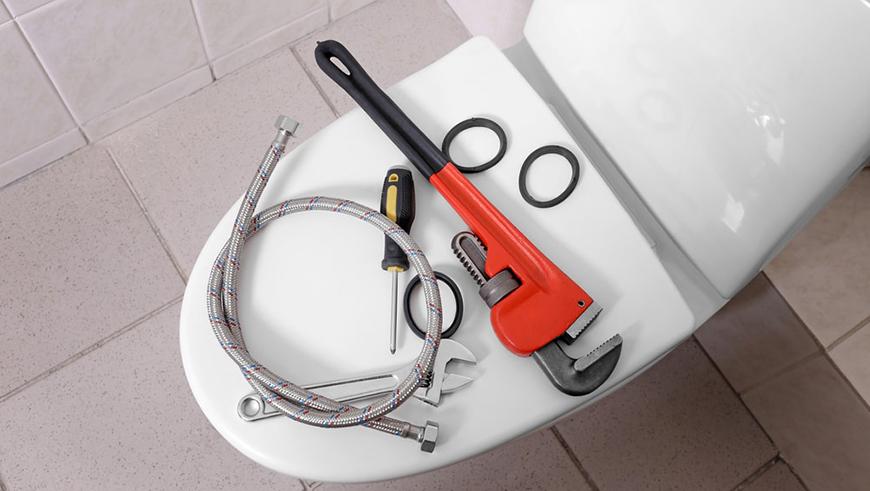
How Much Does it Cost to Unblock a Toilet?
Some of the most common call-out jobs for plumbers include blocked toilets and broken pipes, which need addressing quickly so that further damage isn’t caused.
Typically, plumbers charge a flat-rate for the first call-out to a property, usually charged at 30 minutes to assess the issue.
Assuming a minor blockage within a toilet, and not the connecting pipework or hidden cistern, unblocking can take as little as 30 minutes, usually at a charge of around £30 - £60, though it can be more if you live in London or the surrounding boroughs.
More complicated or severe blockages will incur a greater cost of around £200 if there are additional underlaying issues that need to be addressed.
Unblocking Toilet Prices
The table below outlines some of the expected costs based on hiring a plumber to unblock the toilet for you, assuming it is not an emergency call-out.
| BLOCKAGE | METHOD | COST | TIME |
|---|---|---|---|
| Within the toilet | Plunger | £30 - £60 | 30 minutes |
| Toilet snake | £30 – £60 | 30 minutes | |
| Within the external drains | Drain rodding | £80 – £100 | Up to 1 hour |
| Drain jetting | £150 – £175 | 1 – 2 hours | |
| Drain rodding and jetting | £150 – £200 | 1 – 2 hours |
The following table outlines the cost of purchasing materials suitable for DIY usage, assuming the blockage is within the toilet or within reach of the U-bend:
| METHOD | MATERIAL COST | TIME FRAME |
|---|---|---|
| Plunger | £2 - £20 | Up to 30 minutes |
| Toilet unblocking chemicals | £5 - £30 | According to instructions |
| Toilet snake | £10 - £60 | Up to 30 minutes |
| Baking soda and vinegar | £2 - £5 | 30 minutes or more |
Additional Costs
If you require the assistance of a plumber to unblock your toilet, it may be worth considering if any of the following work is also worth undertaking, especially if toilet blockages are a persistent issue:
New Pipework Costs
It may be that your current pipework connecting your toilet to the waste pipe is insufficient; it may be corroded, damaged or simply not large enough.
For replacement piping, you can expect a cost of roughly £30 - £40.
New Toilet Costs
If you’re considering having work done to increase the effectiveness of your toilet, it might be worth considering replacing the toilet itself; especially if you are finding blockages a recurring issue.
New toilets can be purchased from between £50 - £300 and come in a variety of styles to suit every budget.
Update Bathroom Costs
It stands to reason that if considerable work needs to be carried out to rectify issues within the toilet, that it might be worth considering updating the bathroom as a whole so that the suite matches.
A new bathroom suite can cost between an average of £3,000 - £6,000 depending on the style and quality of finish.
Unblock Sink Costs
A drain unblocking tool, sometimes known as a drain snake, can cost as little as £5 to purchase and is suitable for DIY use.
If you are hiring a professional to unblock a toilet at a flat-rate for their first 30 minutes, it might be worth asking them to inspect the sink at the same time.
Drain Unblocking Costs
If you notice foul odours from your sinks and drains, or have frequent flushing issues within the toilets, it is a good indication that you have a blockage within your property drains.
A professional drain unblocking service will cost you around £60 for the initial call-out, plus the cost of labour to unblock the drains using an appropriate method such as rodding or jetting.
Cost Breakdown Calculator
The average cost of unblocking a toilet, assuming a minor blockage and the use of a plunger, would be around £100.
Materials
£10
Labour
£80
Waste Removal
£10
Labour Costs and Time Frames
As a general rule, plumbers within the UK tend to charge between £150 – £200 a day for their time.
For minor toilet blockages that can be easily accessed, the average time to complete the work takes roughly 30 minutes, at a cost of around £60 which is the average call-out charge for most UK plumbers.
For more severe blockages within the internal pipework of your home or in the waste drainage pipe, the time may increase to up to 2 hours and might involve drain rodding and jetting, which will incur a cost of roughly £200 for labour and materials.
Table of Contents
- How much does it Cost to Unblock a Toilet?
- Labour costs and time frames
- What does unblocking a toilet entail?
- Cost affecting factors of fixing a blocked toilet
- How to unblock a toilet
- How to unblock a toilet with a plunger
- Why is my toilet blocked?
- How can I prevent my toilet from blocking?
- Signs your toilet needs unblocking
- Identifying the blockage
- Emergency toilet repair cost
- Cost of replacing a toilet
- FAQs
- How to find and hire blocked toilet contractors
- Sources
What Does Unblocking a Toilet Entail?
There are a number of unblocking methods can that be employed depending on the location and severity of the blockage, each with a different method of application.
The method chosen by your plumber will be dependant on the severity of the blockage and most appropriate solution.
Before any unblocking method is used, it’s recommended that you:
- Cover the surrounding area with disposable materials in the event of splashing, and for ease of waste removal where necessary;
- Check if the obstruction can be physically removed by hand without the use of invasive tools and materials, or incurring a call-out charge;
- Wear protective, rubber gloves if completing the work yourself.
Unblocking a Toilet Using a Plunger
The majority of minor blockages can be fixed with the use of a plunger.
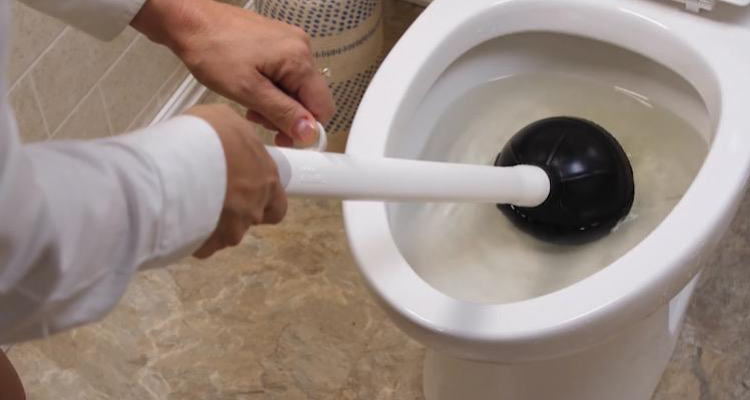
- Place the plunger within the toilet, ensuring it is covered by water and that a seal is formed around the draining outlet.
- Water may need to be added to the bowl if enough is not present.
- Using a pumping motion, slowly push the plunger into the toilet, and quickly pull back, ensuring the seal is not broken in the process.
- This should be repeated roughly 20 times, or less, if you notice the water level dropping.
- If the blockage is still preventing water from free-flowing down the drain, refill the bowl and repeat the process.
Unblocking a Toilet Using Hot Water
Adding hot (but not boiling) water to your toilet may help break up organic matter causing blockages.
- Boil a kettles’ worth of water and allow to cool slightly. The temperature should be similar to a hot cup of tea that is cool enough to drink without scalding.
- Pour the water into the bowl and allow to sit.
- You may want to add dish-soap to help break down grease and oils that may be causing the blockage; be careful to add only a small amount though as you do not want suds to overflow.
- You should notice after a few minutes that the blockage has broken down and water can now pass through the toilet drain again.
- If hot water has not dislodged the blockage, consider using another method.
Unblocking a Toilet Using Baking Soda
Baking soda and vinegar can be used in conjunction with hot water to help to remove blockages from toilets.
Baking soda should be added to the toilet bowl, followed by a hot (but not boiling) water and vinegar mix.
Once the water has been added to the toilet, allow to sit for a minimum of 30 minutes and then flush.
Plumbing Snake
A plumbing snake (sometimes called an auger or toilet snake) is a flexible piece of wire, usually with a helix attachment for the end, used to physically break up and dislodge items.
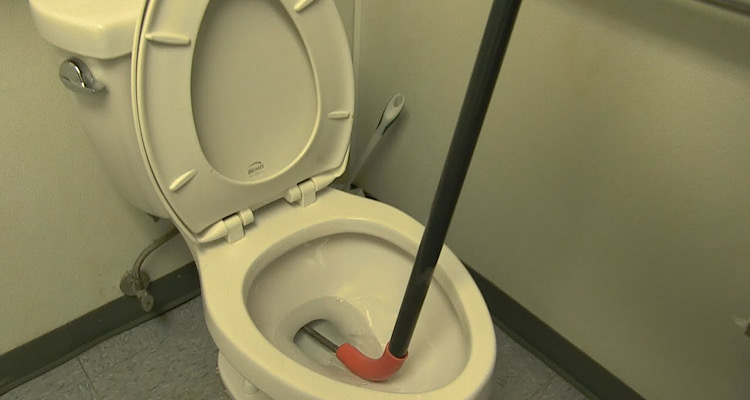
- The plumbing snake will be positioned over the toilet bowl and fed down into the u-bend until contact with the blockage has been made.
- Using an up-and-down or twisting motion on the handle, the auger will begin to break down materials lodged within the pipework.
- Repeat until the blockage is cleared.
Unblocking a Toilet Using Chemical Unblocking Agents
Chemical toilet unblockers work by reacting with the organic matter causing the blockage and breaking it down.
- Always read the label, follow instructions carefully, and make sure to take safety precautions when handling chemicals.
- It’s recommended that you ventilate the room.
- Pour the recommended amount of chemical cleaner into the toilet bowl and allow to sit for the recommended time as per the manufacturer’s instructions.
- Flush the toilet to check if the blockage has been cleared.
Cost Affecting Factors of Fixing a Blocked Toilet
There are a number of factors that can affect the overall cost of unblocking a toilet, with most blockages being assessed on a case-by-case basis, though here are some of the more common influences on the cost:
Type of Blockage
The type of blockage within the toilet can affect the amount of time it takes to rectify, and therefore, cost of professional intervention.
A mild blockage will be much quicker to rectify than a complete blockage, for example.
A blockage caused by inorganic materials, such as a stuck toy or sanitary products, will not react to chemical cleaners, hot water or baking soda removal methods, and so will require alternative removal methods which may be more costly.
Type of Treatment
Methods such as adding hot water and baking soda, particularly if DIY, will be considerably cheaper (costing around £5 for materials) than using chemical cleaners (costing, on average, between £5 - £30), and cheaper again than enlisting the help of a professional service.
Though in some cases, the cost of hiring a professional is unavoidable.
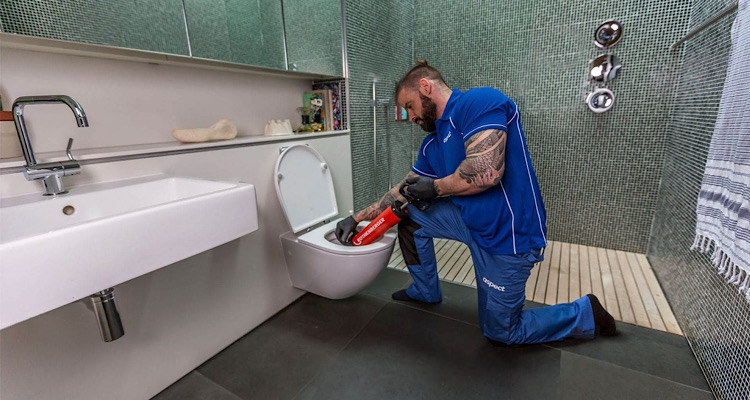
Ease of Access
The location of the blockage within the system will affect the cost of repair.
A blockage within the toilet bowl U-bend, for example, is easier to access, and therefore, assess and treat, than a blockage further down the waste pipe.
How to Unblock a Toilet
If you decide to DIY fix your blocked toilet, make sure to take adequate precautions for yourself and your property, including wearing suitable protective clothing such as gloves and eye-wear where appropriate.
Remember that you will be dealing with hazardous waste and lay disposable materials, such as newspaper, around the affected toilet to catch any spillage.
There are a number of methods that can be used to unblock a toilet that are suitable for DIY undertaking.
The use of plungers, hot water, baking soda and chemical cleaners are all suitable for DIY application as outlined above, but will require some safety precautions, such as protective gloves, and in the case of chemical cleaners in particular, careful reading of the instructions provided by the manufacturer.
As an example of cost indications, to purchase any of the below products, you can expect the following prices:
- Plunger: costs between £2 - £20 depending on the size and quality.
- Baking soda and vinegar mix: £5 or less depending on the amount to be used.
- Chemical toilet unblockers: expect a cost in the region of £5 - £30 depending on the manufacturer.
- Toilet snake: although the cost can vary, you can expect to pay between £10 - £60 for the product, though they are reusable, so it may be worth considering investing in better quality materials.
You should never apply excessive force to a blockage as this can cause damage to pipework; particularly if you are unsure of the nature of the blockage in the first place.
If the blockage is not easy to remove, it may be an indication that there is damage to the pipework and you will need to hire a professional to assess the situation, as there may be more issues than originally thought which may require additional work, such as drain jetting, fixing or replacing broken pipes, or having your septic tank emptied.
How to Unblock a Toilet with a Plunger
Plungers are usually the go-to method of blockage removal within toilets as they are easy to use and cheap to purchase, costing as little as £2 from some retail stores, to upwards of £20, depending on the materials and quality of the product.
As with any waste disposal, you will want to make sure you have adequate protection for yourself and your property, so ensure you wear rubber gloves (costing around £1 - £10 a pair) and some sort of disposable material, such as newspaper, to cover the floor to protect against splashing and spillage.
It’s also advisable to have a bucket or container to hand in case water needs to be removed from the toilet bowl.
When choosing your plunger you should consider the size of the waste outlet that you are tackling; the plunger needs to be large enough that it can seal around the waste pipe with no gaps.
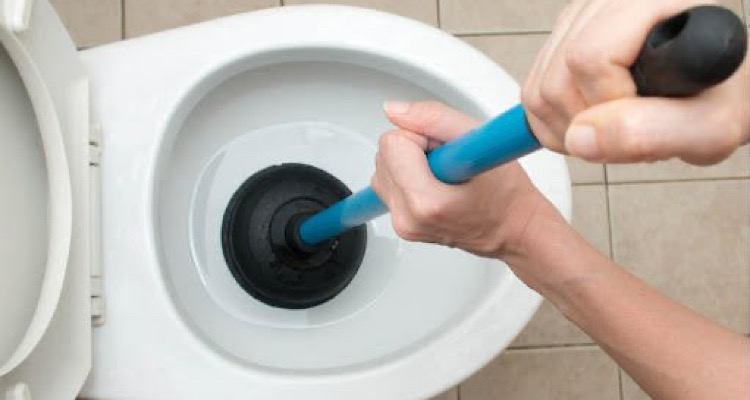
This is important as plunging relies on pressure being forced down the pipes and an incomplete seal will render the plunger useless.
Once the correct size plunger has been selected, place inside the toilet bowl to form a seal over the waste outlet.
Depending on the blockage you may need to add more water to the bowl to ensure the plunger head is covered.
Slowly push the plunger down; this will gently force the air and water against the blockage and pull back sharply, careful not to break the seal.
Repeat the process until the blockage has been cleared.
You can test whether the blockage has been dislodged by flushing the toilet. If it hasn’t, you can repeat the process, removing excess water if needed.
If plunging is unsuccessful after repeated attempts, you may need to try another method or call a professional.
Why Is My Toilet Blocked?
Toilet blockages can be caused by a number of things, but the most common causes are outlined below:
Flushing Too Much Toilet Paper At One Time
Toilet paper is absorbent and so expands slightly on contact with water.
As waste outlets are not particularly big, toilet paper can become lodged, restricting the flow of waste materials.
Flushing Inappropriate Materials
Toilets and sewer systems are not designed to handle certain items, such as wet wipes and sanitary products, which are not biodegradable and can cause severe blockages within pipework if they become stuck.
It’s recommended that these products are disposed of in waste bins.
Failure to do so could see you with a hefty bill to repair damages that could otherwise be avoided.
Built-up Materials in the Waste Pipe
Built-up materials, such as grease and limescale, can cause drainage issues within your home and should be addressed as soon as the problem appears.
It’s recommended that you clean your home pipework, including the toilet, at least once a week using appropriate cleaning solutions to minimise the risk of causing a blockage.
Deodorising or Cleaning Blocks Becoming Lodged
Cleaning blocks placed within the toilet may seem like a good idea as they will refresh the bowl whenever the toilet is flushed, but they run the risk of becoming loose and travelling down your waste outlet.
They may even become lodged between the cistern and the toilet bowl.
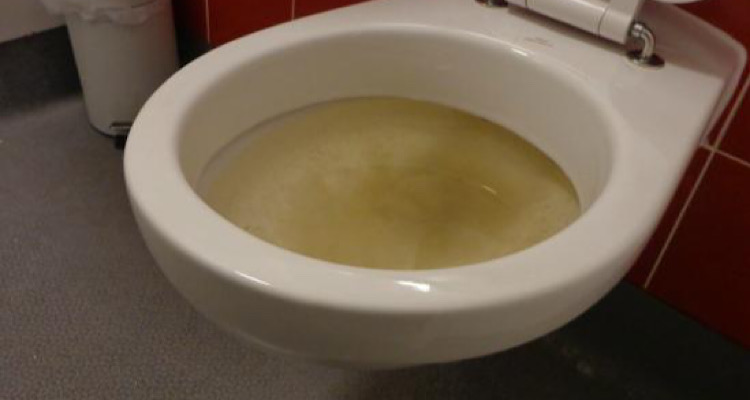
If you use these products, ensure they are properly secured to minimise the risk of causing a blockage.
Cesspit or Septic Tank may be Full
If you own a septic tank or cesspit and you find that your toilet is not flushing, it may be worth investigating to see whether it needs to be emptied.
Once the cesspit is full, there will be no room for the waste materials to go to so you could find that materials are backing-up into the pipework and stopping your toilet from flushing.
Children’s Toys
If you have small children in your home you may find that, occasionally, one of their toys finds its way into the toilet and, potentially, gets stuck if the toilet has been flushed.
If you can see the toy you may be able to grab hold of it, but otherwise you will likely need a plunger to rescue it.
Where possible, try to keep the toilet lid closed to prevent items accidently dropping into the toilet pan.
Construction Waste
Construction materials, such as mortar, glues and fillers, should never be flushed down the toilet or drains, as they will cause difficult-to-remove blockages if they set.
These items should be disposed of safely in a bin.
How Can I Prevent My Toilet From Blocking?
The best way to prevent toilet blockages is to be careful about what is placed in them in the first place.
Items such as sanitary products, wet-wipes and nappies, should be placed within bins and not flushed into the toilet system, preferably even when the packaging suggests they are biodegradable.
They can take longer to disintegrate than you might think which can cause blockages in the meantime.
You should regularly clean your toilet to help prevent limescale and debris build-up, including under the rim where water flows from using a toilet brush and suitable cleaning chemicals.
- Reusable toilet brushes can be purchased for around £2-£15
- A toilet brush with replaceable brush-heads for can be bought for roughly £5, plus £5 - £10 per pack of replacement brush heads.
You should only flush as much toilet paper as necessary at any one time; trying to dispose of large amounts of toilet paper at one time can cause blockages.
Signs Your Toilet Needs Unblocking
There are a number of signs that may indicate that your toilet is blocked and that action needs to be taken in order to fix the issue.
Slow to Flush
If your toilet takes longer than expected to release water from the cistern into the bowl during a flush, it could be an indication that the water-level within the tank is not adequate, or that there is a blockage between the tank and the toilet bowl.
This can be caused by the tank ball creating a seal over the outlet, or a build-up of materials over the rinse outlets.
Slow to Drain
If you notice your toilet is taking longer than usual to drain after flushing, it can indicate the presence of a partial blockage which can be caused by either waste materials or a build-up of calcium and minerals within the pipeline.
Overflowing
Overflowing is an obvious indicator that a blockage is present within your toilet system.
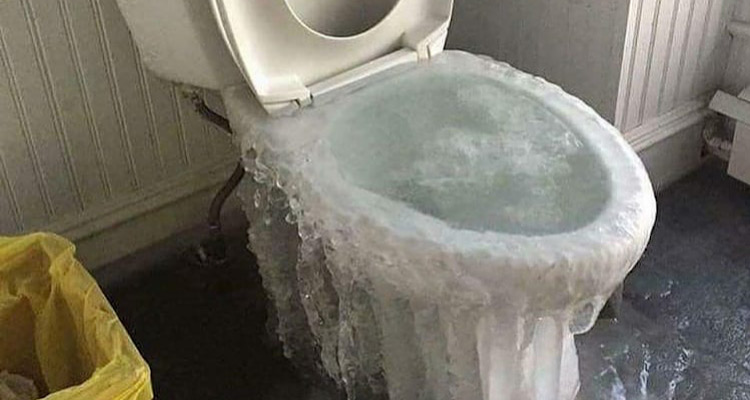
The blockage may not be complete and the water level may drop slowly over time, or may not unblock at all without intervention.
Toilet Gurgles Whilst Draining
Gurgling in a drain or toilet whilst it is emptying indicates a partial blockage.
Waste is still moving through the system, but not at the rate it should be, and the gurgling is caused by air pockets being disturbed and distributed back through the toilet system as waste passes the blockage.
The Toilet Bowl Remains Empty after Flushing
If the bowl fails to refill after flushing the toilet, it could be an indication that there is trapped air within the waste pipes.
You may have noticed gurgling prior to this issue.
Identifying the Blockage
There are several types of blockage, and knowing which sort you are facing can help you to decide the best method to use for fixing the issue.
Partial Blockage Repair Cost
A partial blockage is generally characterised by slow drainage from the bowl into the drains.
You may notice some gurgling and spluttering as well whilst the materials are moving down the waste line, caused by trapped air being forced back up through the pipes.
A partial blockage can be rectified using most unblocking methods, though it’s recommended that you use the least invasive unblocking methods to minimise the risk of accidental damage to the toilet and drains.
The most commonly used methods to dislodge partial blockages are toilet unblocking chemicals that break up the clog or the use of a plunger to dislodge the blockage.
A plumber will likely charge between £30 - £60 to fix a partial blockage, budgeting for 30 minutes of their time.
Although these are relatively cheap and easy for you to rectify yourself, with the material needed costing as little as £2 - £30.
Complete Blockage Repair Cost
A complete blockage will become apparent when either the toilet bowl does not empty at all after flushing, or the toilet fails to refill after flushing.
If you suspect you know the cause of the blockage, and the location of the blockage is accessible from the toilet bowl, there are a few methods that can be used to dislodge it.
For this type of blockage, professionals would recommend using a plunger or toilet auger to breakup or dislodge the blockage.
Depending on the severity of the blockage, this process could take up to an hour to complete and would cost in the region of £60 – £120 to fix.
Outside Blockage Repair Cost
Sometimes the blockage is not within the toilet, but within the drainage pipes themselves, which can be very costly to rectify if the issue isn’t addressed immediately.
Pressure behind the blockage can cause pipes to collapse and can force waste materials back up into your home.
Signs that you have an external blockage can include the toilet not flushing, external drains overflowing or noticing a foul smell coming from your sinks or washing machine.
In the event that your drains need unblocking, you will likely require a type of professional rodding or jetting service to unblock the system, which will usually cost around between £100 - £200 and can take up to 2 hours to completely remove a large blockage.
It’s important to hire a drain specialist if you think your external drains are blocked, as they will be trained to identify the nature of the blockage and take the most appropriate course of action to rectify the issue.
Drain specialists typically cost more to hire than a standard plumber, but they are better trained and equipped to deal with external drainage issues, and in particular, those related to sewerage issues.
Whilst it may be tempting to save some money and use a pressure washer yourself to dislodge a blockage, professionals do not recommend it.
Pressure washers can be dangerous to use and can cause damage to the pipelines if mishandled, particularly if the wrong pressure is used.
Additionally, the issue may not be a build up of materials causing the blockage, but a collapsed pipe instead – in which case, pressure washing the line will just cause further damage.
Emergency Toilet Repair Cost
You should take action as soon as you begin to notice issues within your toilet system.
A blocked toilet is likely to worsen over time if left unattended and you may be left with no choice but to hire an emergency plumbing service if the issue is left unresolved.
If you notice leaking around your toilet, or if your drains begin overflowing, you should seek professional services immediately to reduce the risk of further damage to your property.
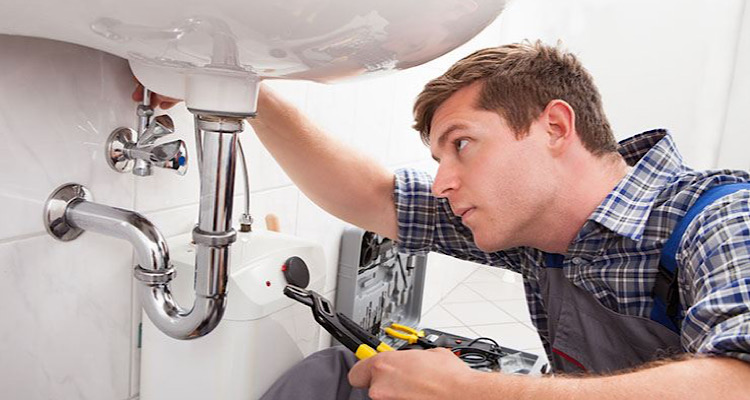
If your property only has one WC it can be incredibly inconvenient if your toilet suddenly ceases to function and you may need to hire an emergency plumber to fix the issue as soon as possible.
If you have tried to unblock the toilet yourself with no success, it is also an indication that the issue is further down the line than is accessible and that a plumber will need to be contacted to complete the work.
Typically speaking, emergency plumbing services are charged at two to three times the standard call-out rate, starting at roughly £180.
So it’s recommended that if you suspect you have an issue with a blocked toilet and you cannot fix it yourself, to hire a plumber as soon as possible to fix the issue, to avoid the extra cost.
Failing to hire an emergency plumber when needed could see you with a costly bill to rectify any damage caused by the broken plumbing; from replacing burst pipes, to re-plastering, to redecorating affected areas.
Cost of Replacing a Toilet
If you find yourself regularly faced with a blocked toilet issue, or that your toilet itself is aged and beginning to show wear, or even if the flushing mechanism is becoming inefficient, you may want to weigh up the maintenance costs you face against the cost of having a new toilet installed.
Toilet replacements come in a variety of styles to suit every budget, with costs ranging from as little as £50 to purchase, to upwards of £300 depending on the style and model.
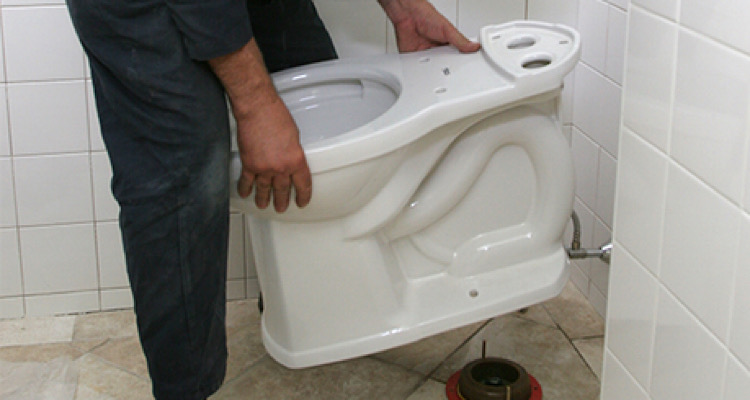
The cost will also be affected depending on if you choose a standing WC, or a wall-hung WC and whether you are replacing the cistern as well.
Installation costs will vary depending on your needs, but assuming that blockages are the main cause of replacement, you can expect a cost of between £300 - £800 to replace the toilet and connecting pipework, including labour, averaging at 2 – 6 hours depending on the complexity of the work involved.
FAQs
Make sure that you wear protective gloves when attempting to unblock a toilet yourself and to place disposable materials on the floor of the surrounding area for an easier clean-up afterwards.
Some people also recommend pouring white vinegar (also called spirit vinegar) down the toilet and allowing to sit overnight before scrubbing with a brush as an organic means of descaling the system.
Once worn down through use, cistern blocks can become stuck between the cistern and the toilet giving you an insufficient flush, but due to their nature, they will dissolve over time and will not cause damage to your toilet system.
Similarly, if the cistern block is overlapping the seal between the cistern and toilet, you may find that you experience leaking.
If you are concerned about the potential negative effects of cistern blocks, there are many alternatives available on the market that can be placed within the toilet bowl (either stuck on or hung over the rim) that will have a similar affect.
If, however, you find that you cannot remove the blockage by yourself. It could be an indication that the issue is further down the system than you can access, in which case, a plumber should be hired to evaluate the situation and fix the issue.
Professionals would not use a pressure washer for internal issues, and for external issues they will use specialist pressure-washers for drains once they have surveyed the site and determined the cause of the blockage.
How to Find and Hire Blocked Toilet Contractors
When choosing to hire a plumber, there are a few things you will want to consider.
If you have friends, family or neighbours that have had to hire a plumber for similar services, ask them whether they would recommend their provider.
They will likely be able to give you an honest review of the services provided, including whether they were satisfied with the work carried out.
You should always get a minimum of three quotes from reliable service providers in your area to get an idea of the sort of prices you can expect to pay for their time and labour.
Most reputable companies will also have a portfolio of their work available so that you can assess the quality and finish of their work.
You should ask what qualifications and accreditations the plumber holds. They should have, at an absolute minimum, an NVQ in domestic plumbing, and it may also be worth enquiring about their public liability insurance so that, in the event of damages caused by the plumber, the cost to be rectified will be covered and you won’t be left footing the bill.
Sources
https://www.diy.com/ideas-advice/how-to-unblock-a-toilet/PROD_npcart_100817.art










